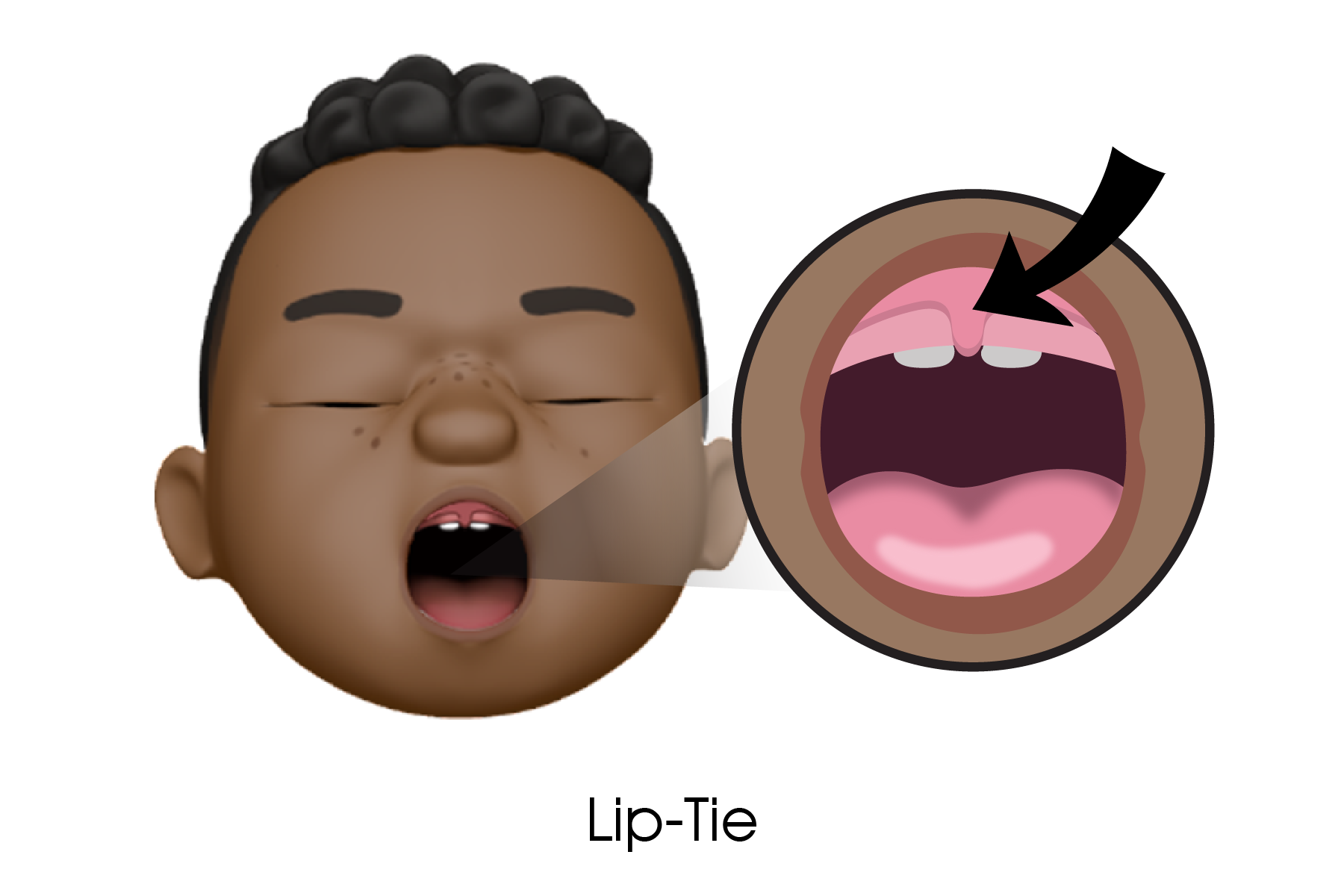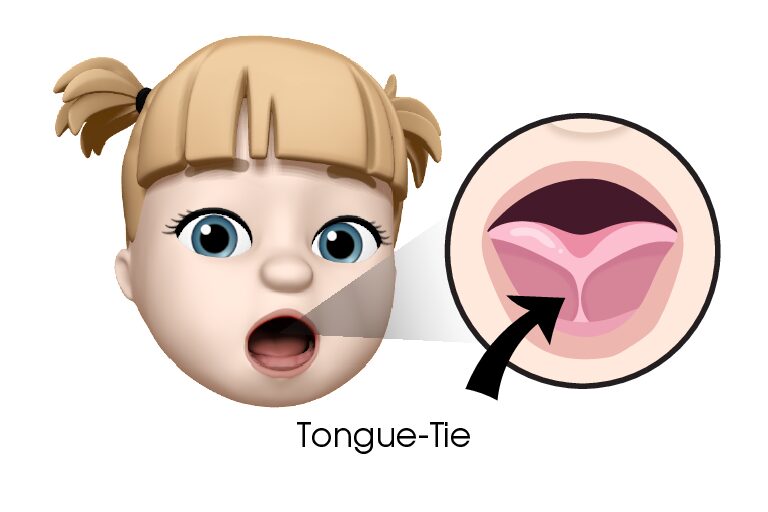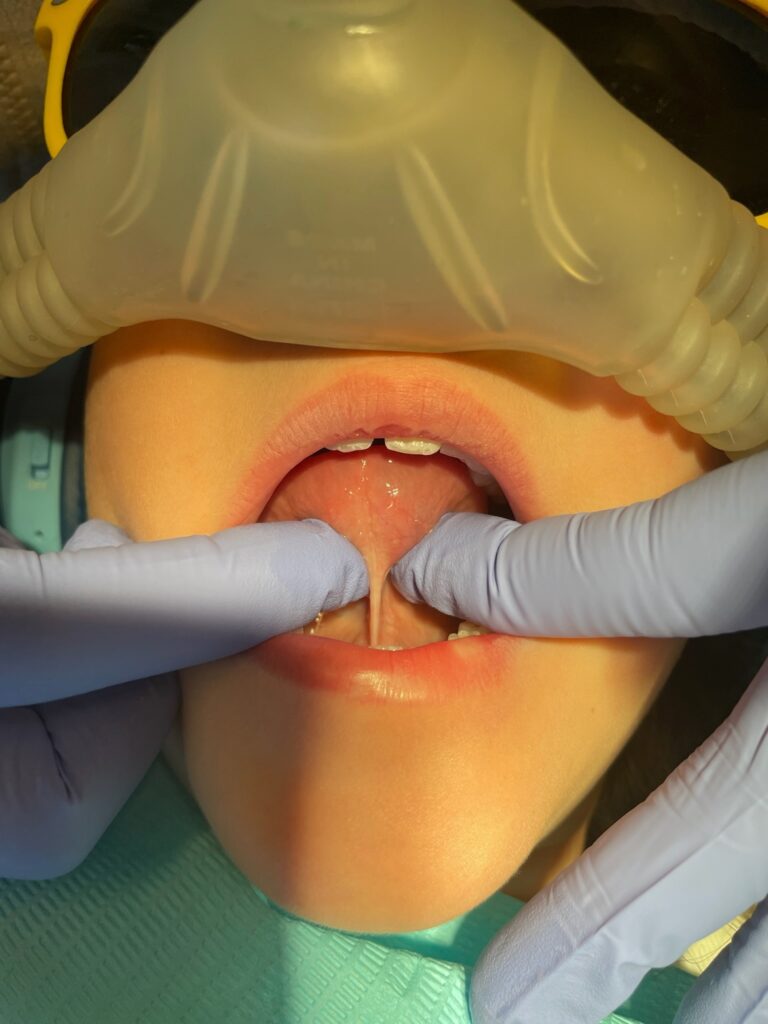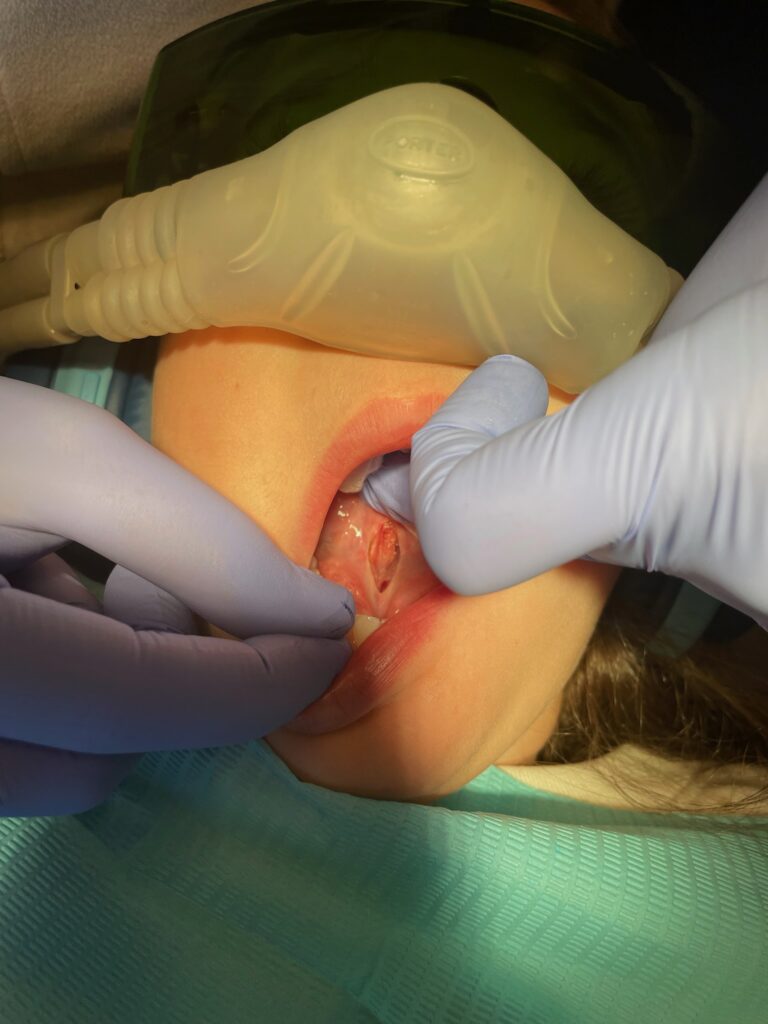Tongue & Lip Tie
If you have a new baby at home, you may have been introduced to the phrases “lip tie” or “tongue tie”. Lip and tongue ties affect 5 – 10% of infants and have been treated for centuries. However, they are only recently being discussed more in the mainstream.
Lip and tongue ties are most often identified by pediatric dentists, lactation consultants, or anyone interacting with feeding infants. When a lip or tongue tie is present, it can have a tremendous impact on both a feeding infant and a breastfeeding mom. Not to mention they can continue to affect your child into adolescence, creating unnecessary limitations, if they are not corrected.
Learning that your infant might be affected by a lip or tongue tie can be overwhelming, but at Mountain Kids Pediatric Dentistry we want to support you and help ease your stress. We offer a relaxed, fun, and comfortable environment, where you can meet with our pediatric dentists or general dentist for kids. They will provide you with information and help you determine what is best for your child because we believe parents know their children best! We are not a one size fits all treatment facility so you can feel comfortable making the choice you feel is best for your child in a judgment-free zone.


DID YOU KNOW?
Everyone is born with both a lingual frenulum and a labial frenulum and they are often not problematic.

To help you better understand lip and tongue ties we want to help you get familiar with a couple of terms you may hear throughout the diagnosis process.
What is the lingual frenulum?
This is just the clinical name for the connective tissue that is under the tongue and supports and limits its movement in different directions.
What is a labial frenulum?
This is just the clinical name for the connective tissue under the upper lip.
WHAT IS A LIP-TIE?
A lip-tie is when the upper lip remains attached to the upper gums by a frenum that is either too short or continues too low down to the tooth line.


DID YOU KNOW?
Your child could also have a lip tie without having a tongue tie and vice versa.
WHAT IS A TONGUE TIE (ANKYLOGLOSSIA)?
Approximately 5-10% of babies born will experience a tongue tie. This is when the tongue & the floor of the mouth separation process does not happen properly while the baby is developing in utero. Due to this disruption there is an abnormally short lingual frenulum. This change in the lingual frenulum can limit t he range of motion of the tongue which can impact:
- Oral motor development
- Feeding skills
- Breathing habits

Tongue tie evaluation, diagnosis and potential treatment will be made based on the functional limitation (meaning not all ties are problematic for all children). Having a frenulum does not mean there is a limitation to the child’s ability to move their tongue properly.
Different assessments need to be done by a specialist in order to determine if there is an oral motor limitation due to a tongue tie.
CAN A TONGUE TIE IMPACT BREAST FEEDING & BOTTLE FEEDING?
Absolutely. This is one of the most common ways that parents find out that their infant has a tongue tie.
While nursing or drinking from a bottle the infant needs the full range of motion from their tongue in order to create the correct amount of suction to express milk. In this motion the front-mid part of the infants tongue draws in, cups and compresses the breast tissue. The strength and mobility/flexibility of the middle to back portion of the tongue creates negative pressure allowing for the removal of milk from the breast.
Tongue ties can make it difficult or impossible for an infant to latch deeply onto the breast. When this happens the mom may experience nipple pain or injury. These infants find it difficult to stay latched or will stay at the breast for extended periods to try to get enough milk.
Since suction can be compromised in tongue tied infants the baby continues to lose their seal around the breast or bottle. This can lead to:
- Milk spilling out the sides of the infants mouth as they’re eating
- Swallowing air which can create additional gas and discomfort for the infant.
Your Content Goes Here
WHY IS TONGUE PLACEMENT CRITICAL FOR BREATHING AND DEVELOPMENT?
When the tongue rests against the top (roof) of the mouth it directs air in & out of the nose. Breathing through the nose allows us to efficiently humidify & filter air – this improves the oxygen circulation throughout our entire bodies.
When your tongue is tied it pulls it down onto the floor of the mouth. This makes it difficult (or impossible) to seal your palate. Having a low tongue posture can cause snoring and disrupted sleep patterns.
At rest, the consistent pressure of the tongue against the palate, balanced by the pressure provided by proper lip sealing, serves as a guide for the growth of our upper jaw. Literature shows children with untreated tongue ties may develop abnormal tongue function early in life with a secondary impact on orofacial growth and sleep disordered breathing

Slide to see before & after




